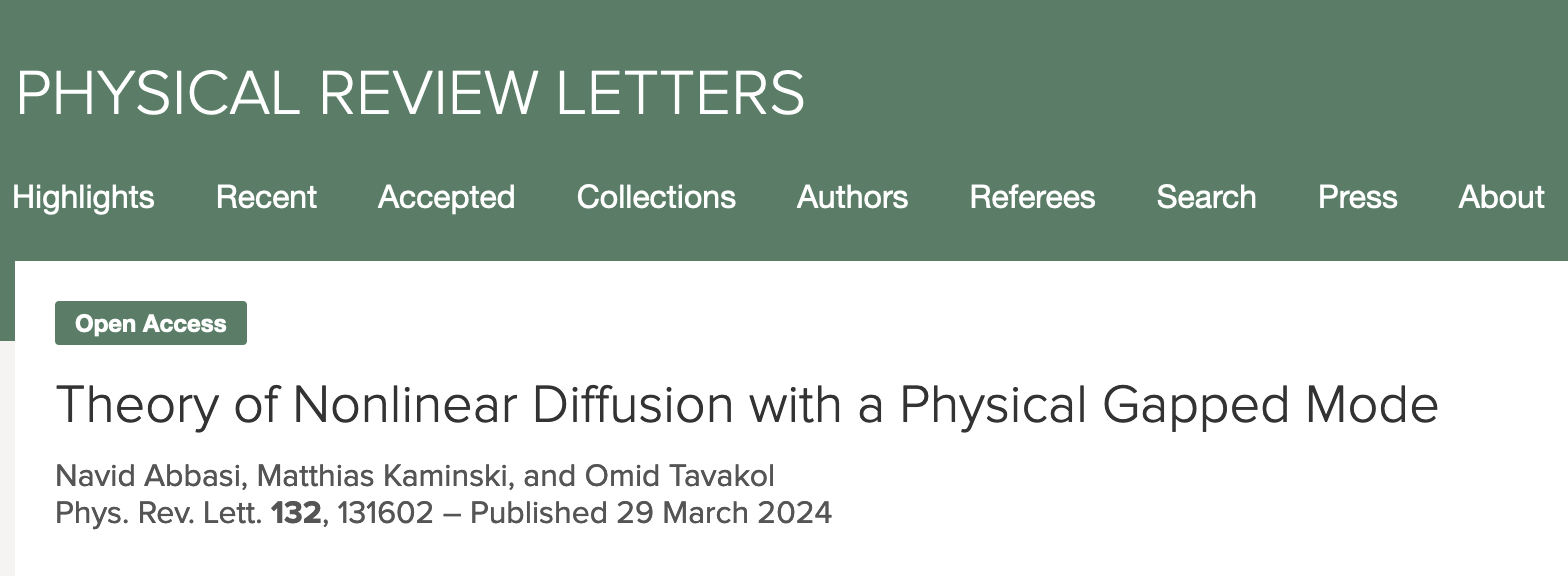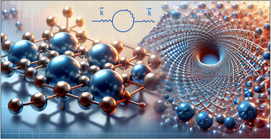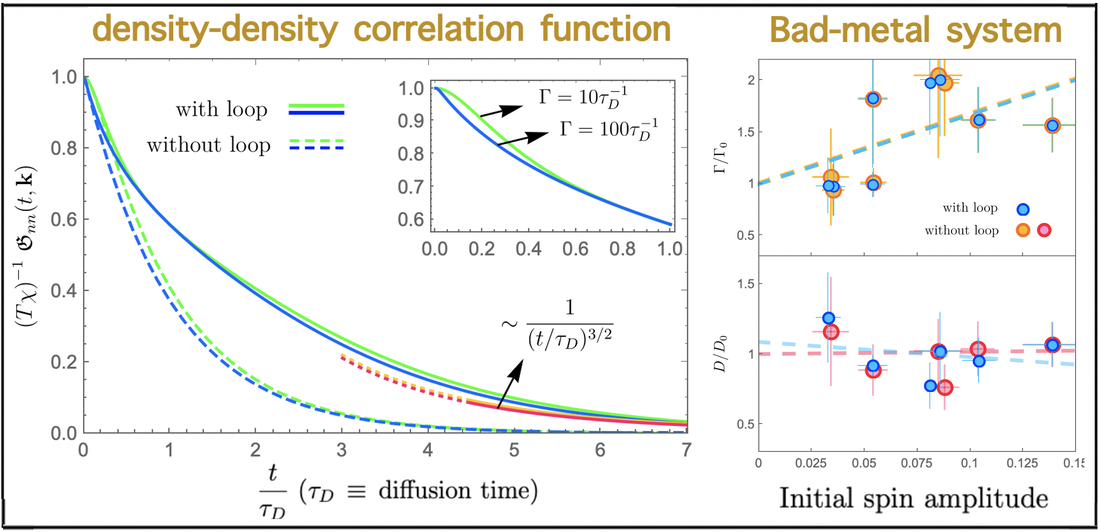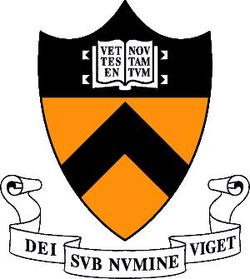News highlight |
Abbasi | Kaminski | Tavakol
Physical Review Letter on diffusion and bad metal. Dropping droplets of ink into a glass of clear water, everyone can observe the effect of classical diffusion spreading the ink until, eventually, it is uniformly distributed. However, pushing this phenomenon into the quantum statistical regime considering a quantum fluid instead of water, brings about a host of non-intuitive effects. This theoretical realization has implications on experiments with ultracold gases [Science 363, 379 (2019)] as well as heavy ion collisions. We construct an effective field theory of diffusive fluctuations in our Letter [Phys.Rev.Lett.132 (2024) 13, 131602]. Read more here ... |
Contact & CV
|
Prof. Dr. Matthias Kaminski,
|Associate Professor of Theoretical Physics| |Vice Chair for Communication & Outreach| University of Alabama Department of Physics and Astronomy 322A Gallalee Hall Tuscaloosa, AL 35487-0324 Telephone: +1 (205) 348 3799 Electronic mail: [email protected] Skype/Zoom: Upon request. |
Former Affiliations
|
2011-2014: Postdoctoral Research Associate
University of Washington Department of Physics and Astronomy |
Research Interests
As a theoretical physicist my goal is to connect fundamental theoretical principles with feasible experiments.
For this purpose I am using analytical and numerical methods. In particular, I consider principles learned from the mathematical framework of string theory. I apply these fundamental principles to strongly coupled quantum systems far from equilibrium. Examples: heavy-ion-collisions, neutron stars, ultracold atoms, particular topological phases, various other condensed matter systems.
Read more ...
For this purpose I am using analytical and numerical methods. In particular, I consider principles learned from the mathematical framework of string theory. I apply these fundamental principles to strongly coupled quantum systems far from equilibrium. Examples: heavy-ion-collisions, neutron stars, ultracold atoms, particular topological phases, various other condensed matter systems.
Read more ...






